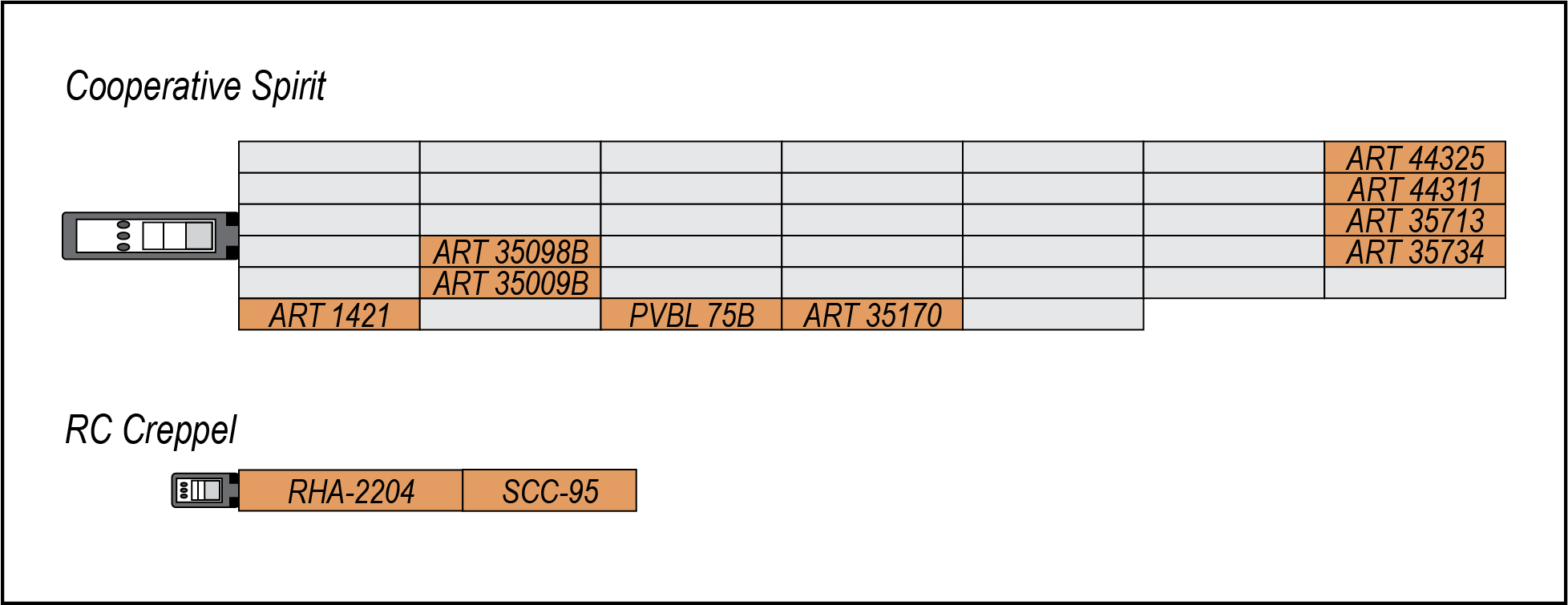Editor's note: This release corrects an error in our release of Aug. 26, 2021, in which we indicated American Waterways Operators was issued Safety Recommendation M-16-25. The correct information, the safety recommendation issued to American Waterways Operators is M-16-24 and is classified as “Open – Acceptable Response” is contained in the body of this release. We apologize for the error.
WASHINGTON (Aug. 26, 2021) — The lack of accurate tow size information and two pilots’ insufficient radio communication led to a fatal collision between two towing vessels in the Lower Mississippi River near Destrehan, Louisiana, according to a National Transportation Safety Board Marine Accident Brief released Thursday.
Marine Accident Brief 21/16 details the NTSB’s investigation of the Jan. 26, 2020, collision of the towing vessels Cooperative Spirit and RC Creppel. The RC Creppel, which capsized in the accident, had four crewmembers aboard — one was rescued and three others were never found. The accident resulted in a breakaway of a combined 42 barges from both tows, the discharge of approximately 8,000 gallons of diesel fuel into the river and the release of sulfuric acid vapors into the atmosphere. The collision resulted in an estimated $3M in property damage to three vessels and 11 barges. The RC Creppel was not recovered.
The Cooperative Spirit was towing 40 barges upriver, and the RC Creppel was towing two barges downriver. The Cooperative Spirit pilot and the RC Creppel pilot agreed to a port-to-port meeting. The RC Creppel pilot communicated the size of his tow; the Cooperative Spirit pilot did not. The barges of the towing vessels collided around 26 Mile Point. As a result of the impact, the RC Creppel capsized and sank. An upbound dry-bulk carrier, the Glory First, collided with the starboard side of the Cooperative Spirit’s tow.
The NTSB determined the probable cause of the collision of the Cooperative Spirit and RC Creppel was the two pilots’ insufficient radio communication before meeting in a bend and not broadcasting accurate Automatic Identification System (AIS) information regarding tow size.
In its report the NTSB said a radio call to the other vessel would have helped both pilots identify each other’s expectations, but neither pilot made a radio call after their initial call to arrange a meeting. The absence of a radio call or “danger” signal indicates that neither pilot was aware of the impending collision.
“When meeting or overtaking a vessel in a bend, especially where high-water conditions can increase the risk of a collision, early and effective communication is critical to ensuring a successful meeting,” the report said. “The use of very high frequency radio can help to dispel assumptions and provide bridge teams and towing vessel operators with the information needed to better assess each vessel’s intentions.”

(The graphic illustrates the approximate arrangement of the Cooperative Spirit and RC Creppel tows. The barges in orange were damaged in the accident. NTSB graphic by Christy Spangler)
Neither the RC Creppel nor the Cooperative Spirit broadcasted the total overall length of the vessels and their tows to other AIS users. The RC Creppel’s AIS broadcast showed its length at 69 feet rather than its actual overall length of 514 feet. The Cooperative Spirit’s AIS broadcast showed the length at 200 feet rather than its actual overall length of 1,600 feet. The vessels would have had an improved picture nearing each other if either’s AIS included the accurate size of the tows.
The NTSB has previously noted the importance of ensuring that vessels engaged in towing operations broadcast accurate AIS information regarding tow size.
“The overall dimensions of a vessel and its tow may change significantly with each transit. For vessels towing ahead or alongside, the dimensions in AIS should reflect the overall rectangular area of the vessel and its tow,” the report said. “Consistently entering the complete dimensions of a tow configuration into AIS for each transit helps to alleviate possible misinterpretation and thus enhances the situational awareness of all waterway users.”
No safety recommendations were issued as a result of this investigation. In 2016 the NTSB issued Safety Recommendation M-16-15 to the U.S. Coast Guard to “work with the Radio Technical Commission for Maritime Services and the American Waterways Operators to modify regulations, procedures, and equipment standards, as necessary, to ensure that vessels engaged in towing operations broadcast accurate automatic identification system information regarding tow size and tow configuration as well as vessel size.” The NTSB issued similar Safety Recommendations to the American Waterways Operators (M-16-24) and the Radio Technical Commission (M-16-25). These safety recommendations remain open. Safety Recommendation M-16-15 is classified as “Open-Unacceptable Response,” M-16-24 is classified as “Open-Acceptable Response” and M-16-25 is classified as “Open-Awaiting Response.” These safety recommendations need to be implemented to help save lives and prevent maritime tragedies.
Marine Accident Brief 21/16 is available at https://go.usa.gov/xFzxJ.
To report an incident/accident or if you are a public safety agency, please call 1-844-373-9922 or 202-314-6290 to speak to a Watch Officer at the NTSB Response Operations Center (ROC) in Washington, DC (24/7).